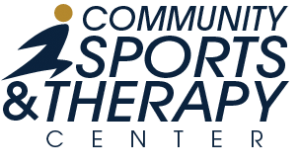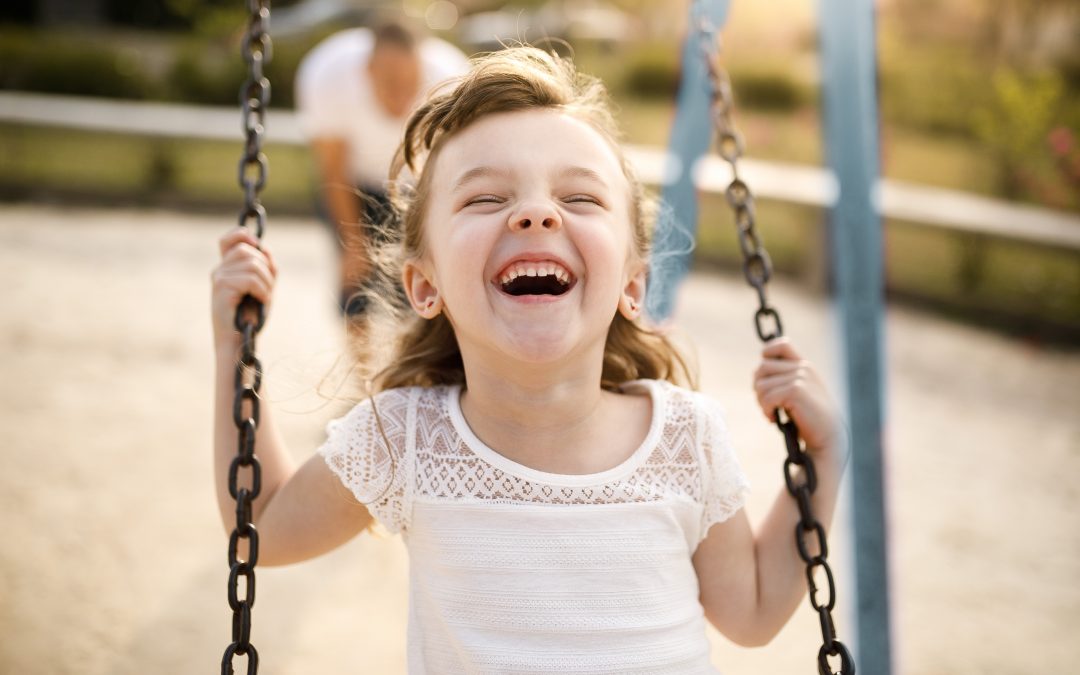Play is often considered the “work” of kids—and is a vital job we shouldn’t let them call in sick for. Many activities that seem to just be a game help develop your child’s gross motor skills including their balance and coordination.
What are gross motor skills?
Motor skills are actions that involve the movement of muscles in the body. They are divided into two groups: gross motor skills and fine motor skills. Gross motor skills require whole body movement and involve the large muscles of the body to perform everyday functions such as crawling and walking, running and jumping, standing and sitting upright at a table. They also include eye-hand and eye-foot coordination skills such as throwing, catching, and kicking, as well as riding a bike or a scooter and swimming. Fine motor skills are smaller actions, such as grasping an object between the thumb and a finger or using the lips and tongue to taste objects. Motor skills usually develop together since many activities depend on the coordination of gross and fine motor skills.
Did you know that exercise benefits kids in the following ways?
- Strengthens balance, motor skills, and body awareness
- Improves muscle strength, coordination, and flexibility
- Generates healthier bone density
- Assists in better control of weight
- Improves social skills
- Helps kids cope with stress, anxiety, and depression
Some of the key building blocks necessary to develop gross motor skills include:
- Body Awareness: knowing where the body is in space and how to manage movement of various body parts
- Motor Planning: the ability to conceive, plan, and carry out a skilled, non-habitual motor act in the correct sequence from beginning to end
- Balance: the ability to stabilize your body, whether standing still or maintaining motion
- Coordination: the ability to use different parts of the body together smoothly and efficiently
- Hand-Eye and Hand-Foot Coordination: using the hands and eyes or feet and eyes together
- Crossing Midline: moving an arm or leg across the middle of the body to perform a task
- Muscle Strength: use of adequate force to complete a task
- Endurance: the ability to exert energy and remain active for a long period of time
- Bilateral Hand Use: using two hands together to complete an activity
There are a number of activities parents can have children do to help develop their large motor skills including:
- Balls: Use a variety of sizes and textures for bouncing, kicking, throwing, catching, and chasing. Ball activities help develop hand-eye and foot-eye coordination and motor planning. Bouncing on a hopper ball can help a child with body awareness and balance.
- Balance Bikes: Riding a bike helps a child develop focus, balance, strength, and endurance. Balance bikes are designed without pedals and move by foot propulsion. When fundamentals of balance and steering are mastered, the child can transition to a bicycle with pedals.
- Swings: Swinging helps strengthen the core and work on balance and they are just fun!
- Jump Ropes: Jumping rope is a simple, inexpensive fitness activity that helps to develop muscle strength and endurance while also addressing coordination and motor planning. For kids who are unable to complete traditional jump roping, the rope can be laid flat on the floor/ground and the child can jump over the rope or another person can swing the rope in a circle close to the ground and the child can jump over the rope.
- Bubbles: Bubbles can be used to work on a variety of motor components to build motor skills including body awareness, strength, hand-eye and hand-foot coordination, and bilateral hand use. The child can pop the bubbles using various body parts, clap hands together to pop bubbles, jump on the bubbles or jump to reach the bubbles, or use a stick or bat to pop the bubbles.
- Sidewalk Chalk: Chalk can also be used to work on balance and strength. The child can walk on chalk lines with various turns and curves or create a hopscotch pattern that is used for both two footed jumping and single leg jumping.
- Unstable Surfaces or Stepping Stones: Walking over unstable surfaces, such as pillows, bean bags, blankets, or stepping stones on the floor make the trunk work hard to maintain an upright position and challenge balance.
- Animal Walks and Wheelbarrow Walking: Animal walks such as bear crawl, frog leaps, kangaroo jumps, and crab walk, as well as wheelbarrow walking help to develop strength, coordination, and motor planning.
- Swimming:While swimming the body has to work against the resistance of the water, thus providing better awareness of where the body is in space.
- Motor Movement Songs: Motor activities set to music help develop coordination, body awareness, and motor planning.
How can I tell if my child has problems with gross motor skills?
If a child has difficulties with large motor activities, he/she might:
- Fall easily, trip often, or can’t ‘recover’ quickly from being off balance.
- Move stiffly and lack fluid body movement (e.g. run like a ‘robot’).
- Avoid physical activity (e.g. playground use, sports participation).
- Be late to reach developmental milestones (e.g. crawling and walking).
- Be slower than their peers to master physical skills (e.g. jumping, bike riding, or swimming).
- Push harder, move faster, or invade the personal space of others more than they intend to.
- Be fearful of new physical games (e.g. swings) or scared of heights that do not faze their peers.
- Have trouble navigating some environments (e.g. steps, curbs, uneven ground).
- Participate in physical activity for only short periods (have low endurance).
- Be unable to plan and correctly sequence events or steps in a process (e.g. step forward before throwing).
- Fail to perform movements safely (e.g. climbing).
- Lose previously mastered skill if they do not keep practicing them.
- Be unable to ‘generalize’ or transfer a skill (use the same skill in a different setting/way) (e.g. can easily change between throwing a big/heavy ball to a light/small ball).
Here is a great checklist for gross motor development:
Gross Motor Development Checklist
What can therapy do if I notice difficulties with my child’s gross motor development?
Our pediatric team can evaluate your child to identify what may be causing his/her difficulties with completion of gross motor skills. Through play activities the team then provides therapeutic intervention to target the specific underlying deficits that are affecting your child’s delay in gross motor skills.

